The Newsletter for Members of California State Parks Foundation



reetings, park supporter. As we bid farewell to winter, we’re looking forward to warmer weather and are gearing up for our busiest time of year: spring.
Our work over the past few months has been invigorating, and 2020 is shaping up to be a bright year for parks and the people who visit them. We’re especially excited that our youth access initiative, Pathways to Parks, is in full swing.
First Partner Jennifer Siebel Newsom has been a tremendous advocate of the initiative, and it’s fitting that such significant progress has unfolded in our 50th anniversary year.
We hope to see you in the parks this spring, however you choose to enjoy them. Breathe in fresh redwood air, wiggle your toes in the sand, attend one of our Earth Day events, or take a friend on their very first state park adventure!
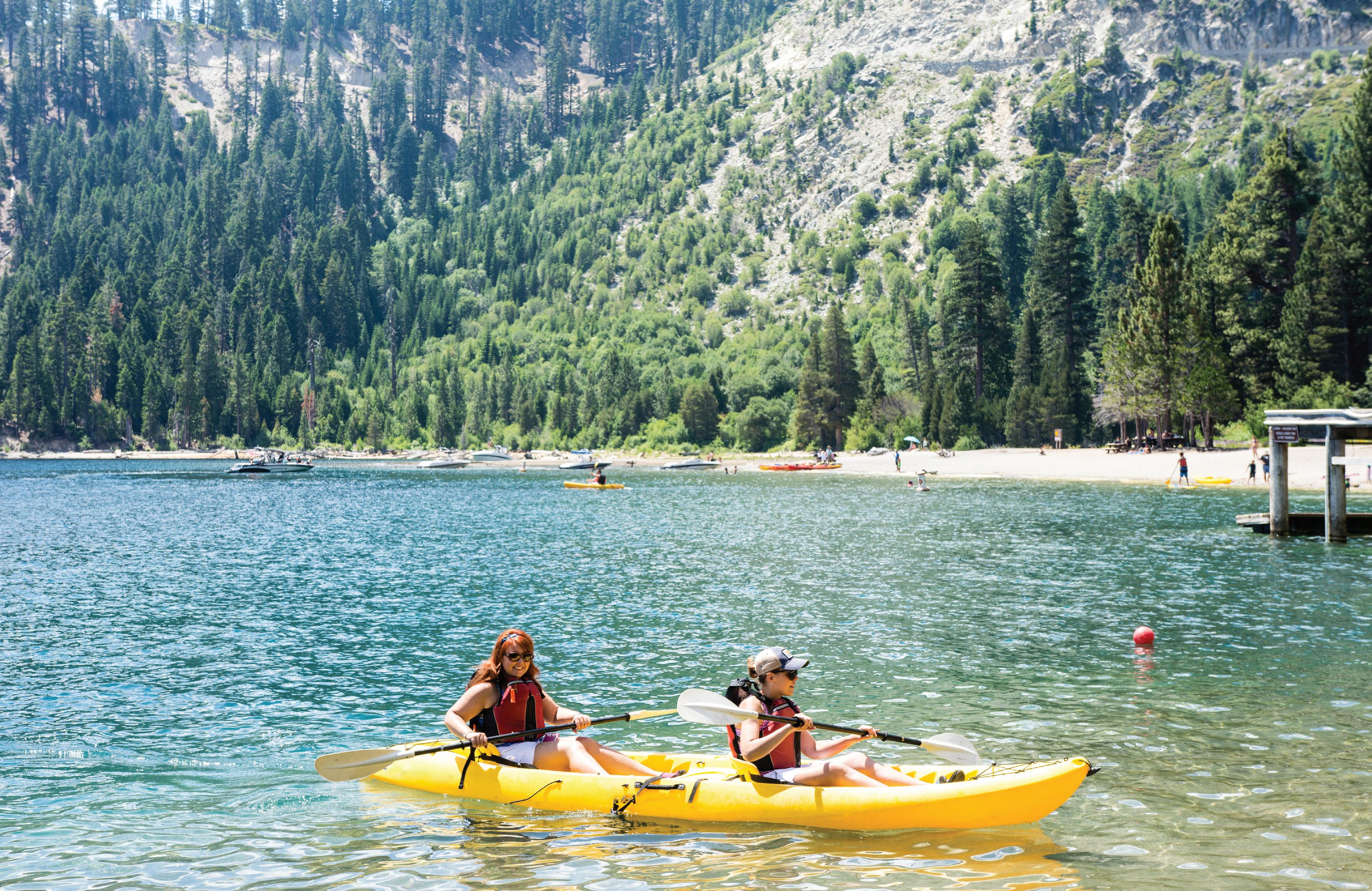


Hello fellow park lovers –
Spring is a busy season for California’s parks – the time when plants and animals and people emerge from our cozy winter nests, stretch, and turn our faces toward the warming sun. It’s also the season when California State Parks Foundation’s park funding advocacy work is fully underway.
In January, Governor Newsom released his budget proposal for the upcoming year. There were many exciting investments for parks in that proposal, including $20 million to fund park access for low-income communities, and another $20 million to acquire a new state park. Candlestick Point State Recreation Area and Colonel Allensworth State Historic Park would also get much needed funding for improvements. Our staff and partners across the state are working hard to make sure these worthy investments are implemented across California. Your support makes this work possible – thank you!
Access for all to our state parks remains a primary goal of California State Parks Foundation. I am so honored to be joined in this work by First Partner Jennifer Siebel Newsom. As the chair of our Pathways to Parks initiative, she is working shoulder to shoulder with us to ensure that all of California’s youth experience the health and wellness benefits of our state park treasures –improving the quality of their lives today, and guaranteeing that tomorrow we will have the champions we need to advocate for our parks system.
One of the best ways to connect with your parks this spring is to visit them. As Californians, we are lucky to have a state parks system that is so large and diverse. I’m planning to spend a weekend in the cool, damp forests and beaches of Mendocino, and another visiting the blooming deserts of Southern California. Which state parks will you visit this spring? I love seeing your pictures and hearing your stories – keep sharing them with us!
Warmly,
e could not accomplish any of our work without the support of members, donors, and volunteers. You make an enormous difference in helping us carry out programs and projects for the benefit of state parks and the millions of Californians who use them. These numbers reflect what you helped make possible in 2019:
Rachel Norton Executive Director
volunteer hours for parks volunteers in parks
3,719 192
volunteer workdays
9,218
111
37 action alert responses asking legislators to support parks and protect public land legislative office visits
140 91% grants awarded totaling $363,425 98% grassroots advocates engaged at Park Advocacy Day
15,160 of park partners participating in our trainings reported that they gained useful knowledge and tools of volunteers felt more connected to state parks as a result of participating in our workdays

ast fiscal year, California State Parks Foundation began to build the blueprint for Pathways to Parks by working with a team of researchers from UCLA’s Institute of the Environment and Sustainability to analyze the health and demographic data of the communities surrounding each state park and review current youth programming in our state parks.
As a result of this work, we created an interactive online map to help people who conduct programs in state parks better understand and engage potential family and youth visitors. You can now view this map online at calparks.org/map
Now, a top priority of the Pathways to Parks initiative is developing
impactful policy solutions that build new and meaningful pathways to state parks for California’s youth. Inspired by the national program, Every Kid Outdoors, we are championing California’s version to connect fourth graders with a park pass that provides them (and their families) with free access to key state parks for one year. In addition, we hope to create meaningful experiences for the next generation of park stewards, helping them to foster a deep love and appreciation for state parks.
Building on the momentum of the past year, we are now working to strengthen our network of Pathways to Parks advocates and demonstrate the importance of the parks movement.
As the state continues to grapple with critical health and wellbeing challenges surrounding children and youth today, we should be investing in the solutions at our doorstep.
Create an Every Kid Outdoors program in California to provide families of fourth graders with a state parks pass to increase youth access.
Integrate day park passes as part of public benefits provided to families who enroll in programs like Medi-Cal & CalFresh.
Prescribe park visits for preventative health to increase access for health among families.
With a strong blueprint in hand, we are now building a movement with Pathways to Parks. In November, California State Parks Foundation held its inaugural Policy Forum bringing together a cross-section of state leaders and advocates to examine the status of children’s health in California and develop solutions to leverage the state’s open spaces as a tool to improve community health, especially for youth in underserved neighborhoods.
The Policy Forum took place at the Lawrence Hall of Science in Berkeley, California and included
three panel discussions featuring diverse speakers from the parks, health, and youth sectors.
First Partner Jennifer Siebel Newsom, a fierce advocate for California’s youth, provided the Forum’s opening remarks and officially announced her partnership with us on Pathways to Parks.
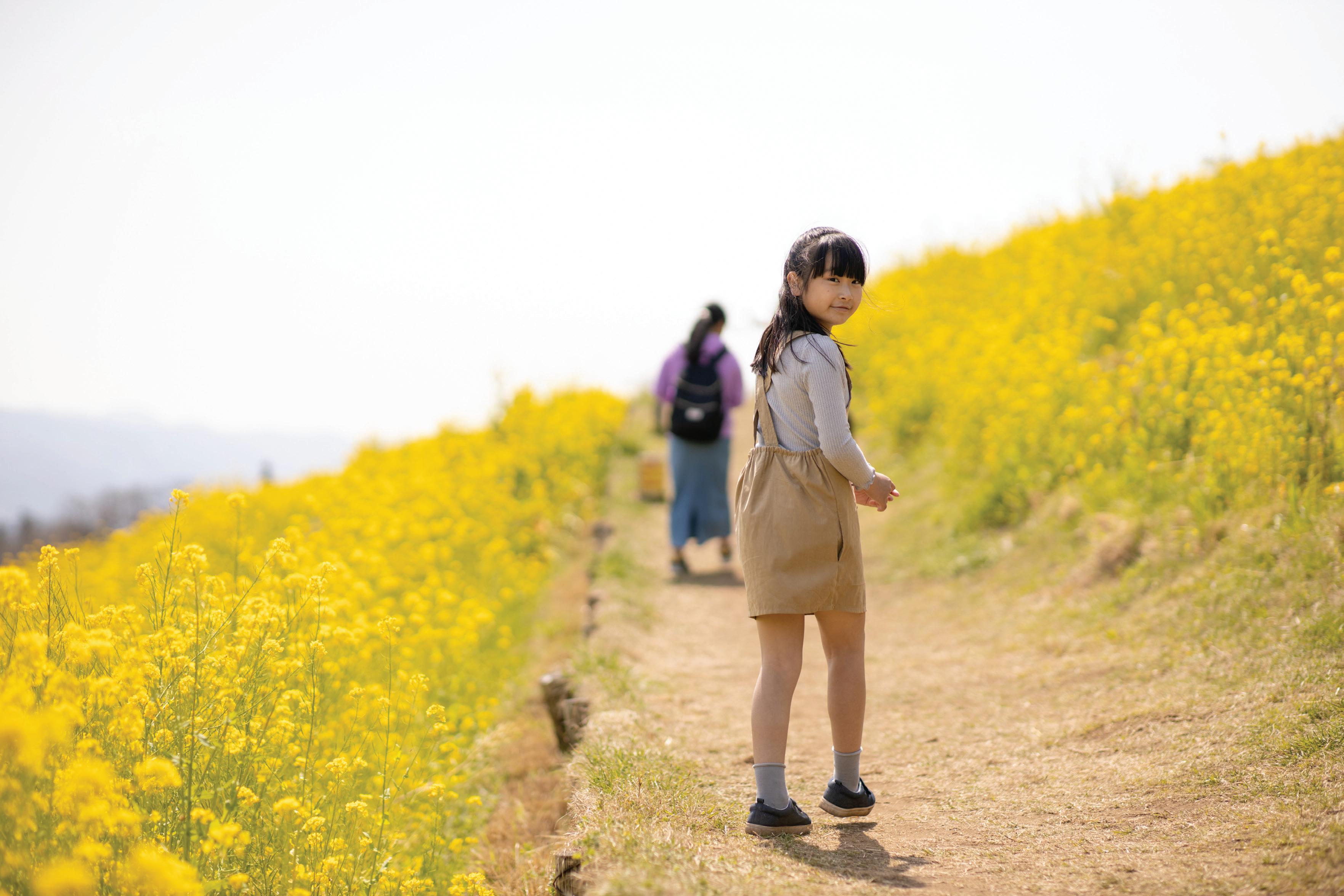
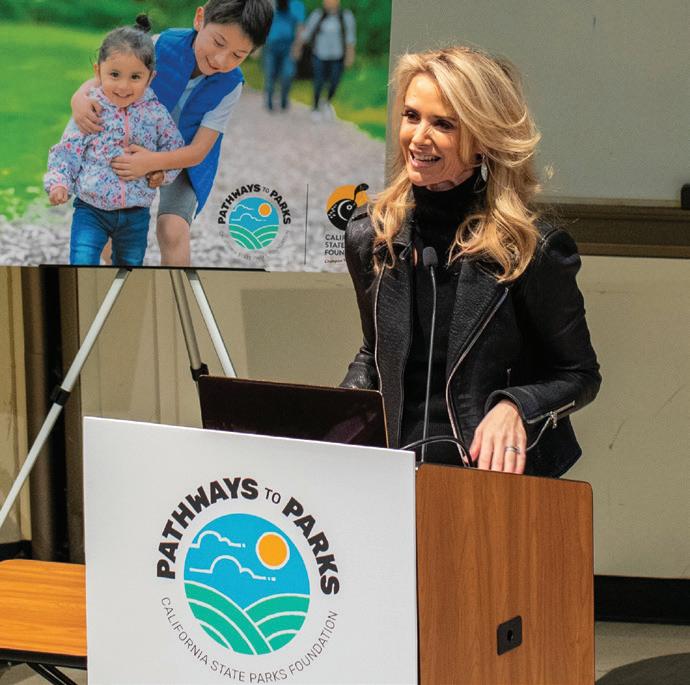
“We have the opportunity right now to build pathways to healthier lives for all Californians – and it starts in our state parks with our kids. Time spent outdoors provides clear mental and physical health benefits at every stage of life, but for youth in underserved communities this opportunity is harder to come by,” said First Partner Jennifer Siebel Newsom. “That is why I am proud to be working with California State Parks Foundation on the Pathways to Parks initiative to increase access to our state’s many green and open spaces so that everyone can experience, learn, grow and connect with the outdoors.”
his year, we’re celebrating twin milestones: our 50th anniversary and the 50th anniversary of Earth Day. In our fight for lands over the course of this half-century, we’ve been reflecting on why Earth Day began in the first place – and how when we come together, the impact can be monumental.
In 1969, a team of workers drilled a well into the ocean floor six miles off the coast of Santa Barbara, and a massive quantity of oil began to gush out of the newly-drilled hole. Within days, oil had built up as deep as six inches on most southern-facing Santa Barbara and Ventura County beaches.
The disaster resulted in the death of thousands of birds, mammals, and other sea life, and the closure of most beaches in the region for several months. The event galvanized public opinion on environmental conservation, arguably beginning what is now the modern-day environmental movement. The first Earth Day in April of 1970 took place largely in response to this environmental tragedy, when 20 million Americans chose to rally in support of a healthy, sustainable world.
Fifty years later, Earth Day is still going strong, and fighting for the environment has become even more crucial. This April, we’re hosting multiple Earth Day events focused on climate resiliency, and we hope to see you there! Become a part of the global movement to protect our home.
If there is a single factor essential to the success of any park system, it is the people. In celebration of our 50 years protecting and preserving the California state parks system, we celebrate those exceptional champions who have advocated for parks.
or Ansel Adams, the personal was political. An ardent conservationist throughout his long life, he considered it a fundamental responsibility of every citizen to become involved in environmental work.
The great photographer and conservationist was one of the original trustees who launched California State Parks Foundation. His letters of advice and his support contributed greatly to the success of the organization over the years. “As Californians, we are favored with extraordinary environmental beauty (if we recognize and protect it) and impressive opportunity (if we do not despoil the sources),” Adams said.
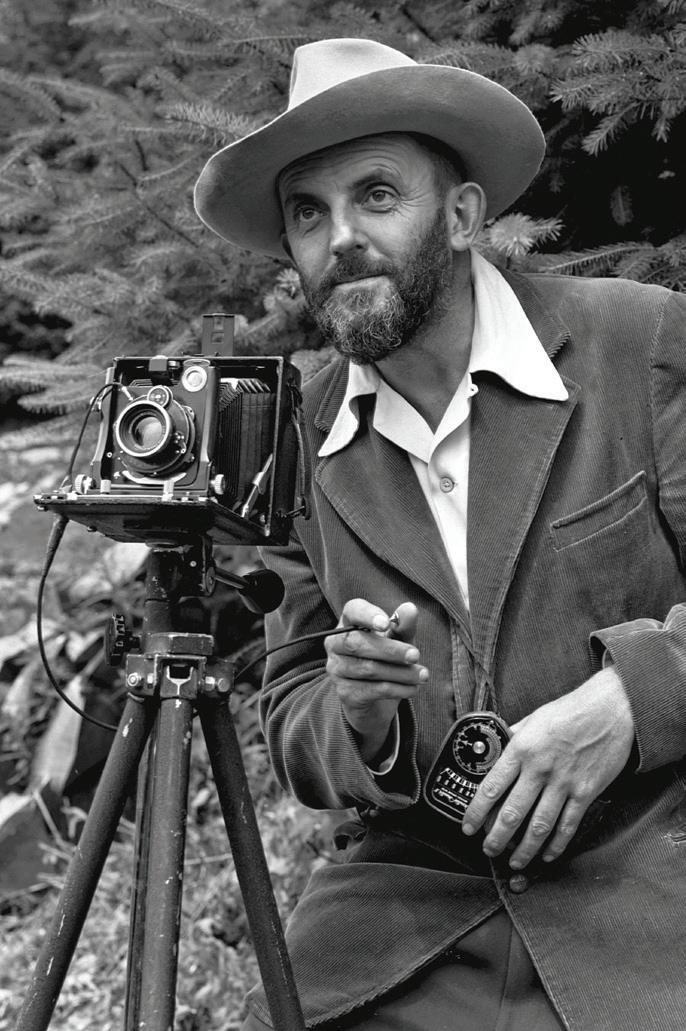
Conserving the natural beauty of California and the United States was an initiative Adams strongly supported. He took time to personally testify before Congress and the California State Legislature in order to protect the fragile environment, helping to forever save those unique bits of nature so future generations could enjoy the natural beauty of this country.
Southern CA Open House: April 4, 2020 at Los Angeles State Historic Park
Northern/Central CA Open House: April 25, 2020 at Angel Island State Park
Visit calparks.org/earthday for more information on open houses, 10+ volunteer workdays throughout the state, and to have your Earth Day gift doubled! Special thanks to United Airlines for matching Earth Day donations up to $75,000.

Californians are both the users and creators of their parks. We are fortunate to have in California not only the largest and most varied state parks system in the nation, but also a body of active and capable champions working on its behalf.
For more information about park champions who have advocated for state parks over the past 50 years, visit calparks.org/50years/ourhistory.

This 19th-century opera house a half hour drive from Sacramento – was built in 1885 and offers acting and dance classes to both adults and children. They orchestrate a number of theatre productions every year, and this spring you can catch Singin’ in the Rain and Curious George: The Golden Meatball.
This lesser-known park is a beautiful, serene gem when its azaleas are in bloom. It is worth going for the fragrance alone!
Pack a lunch to enjoy the picnic area, and plan to visit in April or May when the flowers are at their peak.
pring: a time for clear skies, regrowth, and getting out into nature. Where in California do you want to go this year? Here are some of our favorites, including a number of great places to spot wildflowers.
Pacheco’s annual Wildflower Day is an opportunity to take your friends and family on a colorful day trip! Explore trails and go on a guided hike lined with wildflowers (offered throughout the day). Visitors will learn about the native flora and fauna that inhabit the park –plus, activities like arts and crafts will be available for the kids.


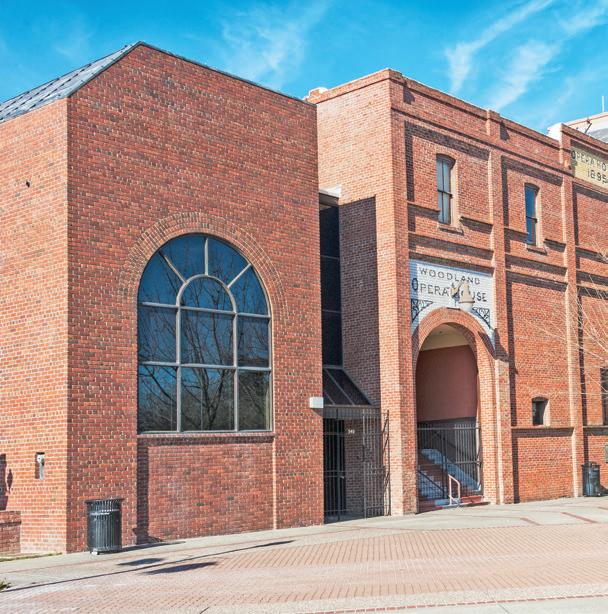

Evening tours of this historic treasure are available MarchMay and are only offered on a seasonal basis. Going at night is a special experience: the castle is aglow, the tours are longer, and docents wear traditional 1930s apparel. Make sure to reserve a spot before they fill up.




You’ve probably seen photos from the “super bloom” here even if you haven’t visited yet. The rolling hills are a verdant green, and they’re covered in bursting flowers as far as the eye can see. It can get busy in the spring, so remember your Leave No Trace principles, and stay on trail to avoid crushing the blooms.
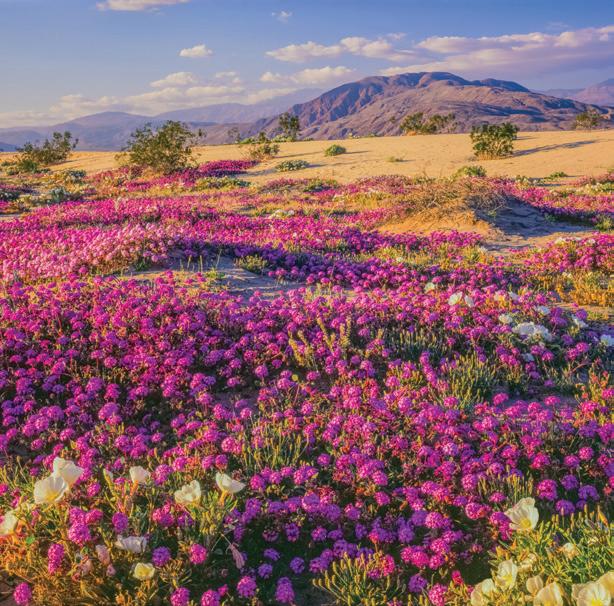

If you’ve never been to California’s largest state park, spring is one of the best times to go. You’ll see thousands of desert wildflowers in bloom!
Henderson Canyon Road and Borrego Palm Canyon are two ideal spots to get a glimpse of the color. The park is also an excellent place to camp and watch the Lyrids meteor shower if you visit in mid-April.
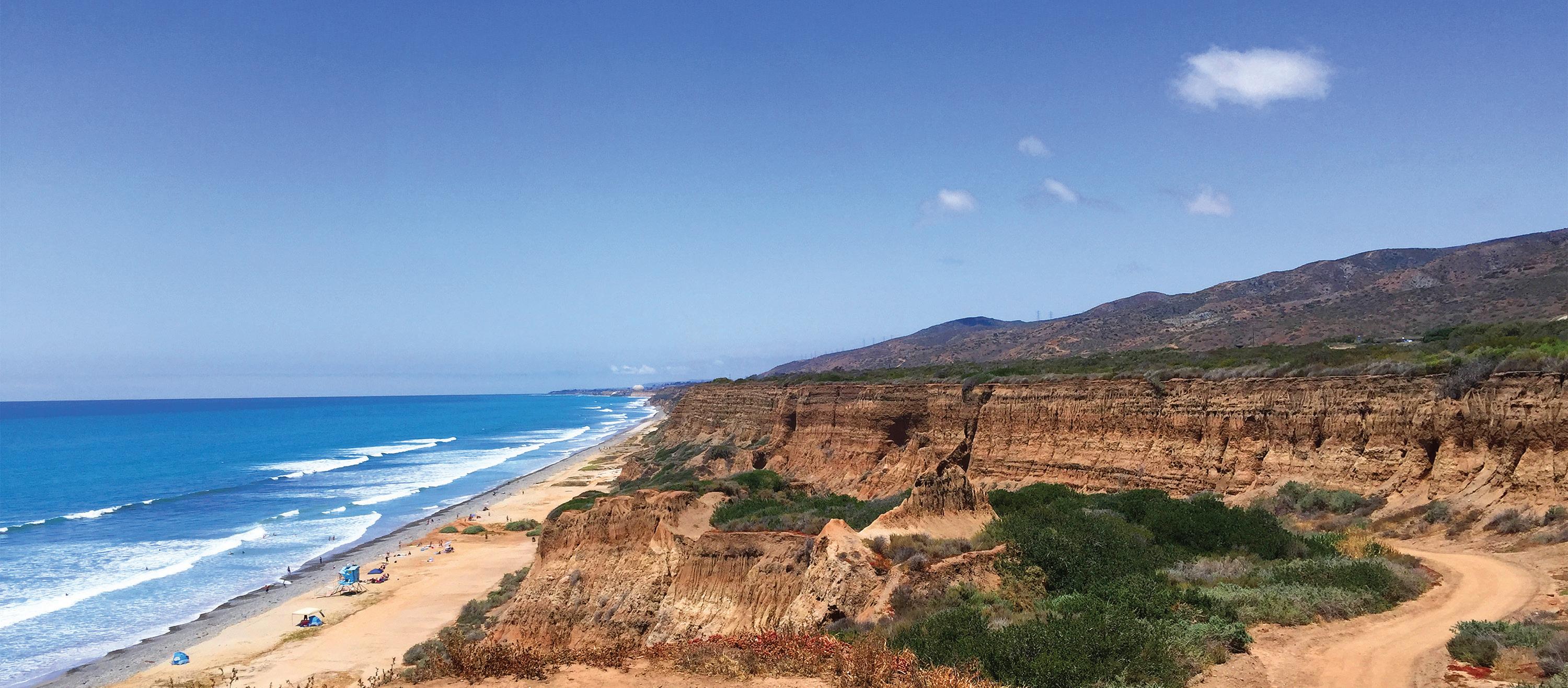
San Onofre State Beach is a 3,000-acre park within San Diego County in the city of San Clemente. This coastal park protects the last remaining undeveloped watershed in southern California, is home to the world-famous Trestles Beach, and houses 10 federally-threatened or endangered species.
For almost two decades, California State Parks Foundation has collaborated with key conservation and environmental partners in the Save San Onofre Coalition (SSOC) to protect San Onofre State Beach from a proposed toll road. The threat to San Onofre State beach began in 1986 when the Transportation Corridor Agencies (TCA) proposed to build a multilane toll road that would have bisected San Onofre State Beach and ruined the San Mateo Watershed.
Park supporters like you fought that proposal. After years of advocacy, lobbying at the state and federal levels, mobilizing grassroots supporters and organizations, and engaging in litigation to protect the park, California State Parks Foundation and our allies in the SSOC negotiated a key settlement with the TCA that ended the toll road threat to the park in 2016.
Unfortunately, in July 2017, TCA, SSOC, and the state of California were sued by the City of San Clemente and a local homeowners’ group, Reserve
Maintenance Corporation (Reserve), to invalidate the settlement agreement. The City and Reserve fear that, because it can no longer construct a route through the park, the TCA will pursue a route that goes through San Clemente.
Currently, California State Parks Foundation continues to serve as the fiscal agent for the SSOC, is a member of the core committee charged with implementing the settlement agreement, participates in calls and in regular status meetings between the SSOC and TCA, and is the lead sponsor of pending legislation in the State Legislature, Assembly Bill 1426 (Boerner Horvath).
We are hopeful and will continue to push this legislation forward to protect San Onofre State Beach in 2020. Cherished by swimmers, campers, kayakers, birders, fishermen, off-duty Marines, bicyclists and sunbathers, the beach is a unique resource for Californians and must be preserved. Visit calparks.org/sanonofretimeline to learn more about the fight for San Onofre.
tanding as one of the quintessential symbols of the Central California coast is a 115-foot tall lighthouse just south of Pescadero. Pigeon Point Light Station State Historic Park has long been a beloved road trip stop, photo opportunity, and even hostel.
In order to protect the public from the cliff at the edge of the park property, a fence was installed around the perimeter of the bluff in the 1980s. By 2019, this fence had fallen into disrepair and no longer effectively served its purpose. California State Parks Foundation Volunteer Core Leader Bob Fox and Pigeon Point Special Projects Coordinator Julie Barrow set out to collect the necessary materials and funding to build a new fence.
In May 2019, a team of California State Parks Foundation volunteers and state parks staff began working on a new perimeter safety fence. Wood was secured from Big Creek Lumber and other necessary materials were provided by Coastside State Parks Association. Using Año Nuevo State Park as a staging area, the wood was painted and assembled over several monthly volunteer workdays. In August, the fence was transported to Pigeon Point.
After the new fence was installed, the trail along it was widened by volunteers, and gravel (donated by Rice Soil Farm) was spread to avoid mud buildup. The result was a brand-new white picket fence stretching along the bluff of the Pigeon Point property. “The difference was amazing,” said Bob Fox, who saw the project from conception to completion.
Take some time on your next trip down the coast to visit this beautiful California gem, or come to a California State Parks Foundation workday to become a part of its story! Find workdays near you at calparks.org/ volunteer



eland Stanford Mansion State Historic Park is Sacramento’s oldest house. In its 131-year history, it has served as a private residence, orphanage, and community center. Most famously, the mansion served as the residence for California’s eighth governor and president of the Central Pacific Railroad, Leland Stanford.
After the Department of Parks and Recreation purchased the historic home in 1978, California State Parks Foundation spent thousands of hours renovating this impressive structure under the guidance of an archeological and architectural team. Thanks to the Department of Parks and Recreation and amazing volunteers, you can tour this stunning example of the splendor and elegance of the Victorian era in California.
id you recently visit a California state park and snap a photo? Then you could be our next photo of the month winner! Share your photos with us by using our My California State Parks Flickr group or use the hashtag #MyCAStatePark and tag @calparks on Twitter and Instagram, and California State Parks Foundation on Facebook.
Monthly winners receive a California Explorer Annual Day Pass. We hope photographers, both amateur and professional, will continue to bring their passion and talent to the contest.

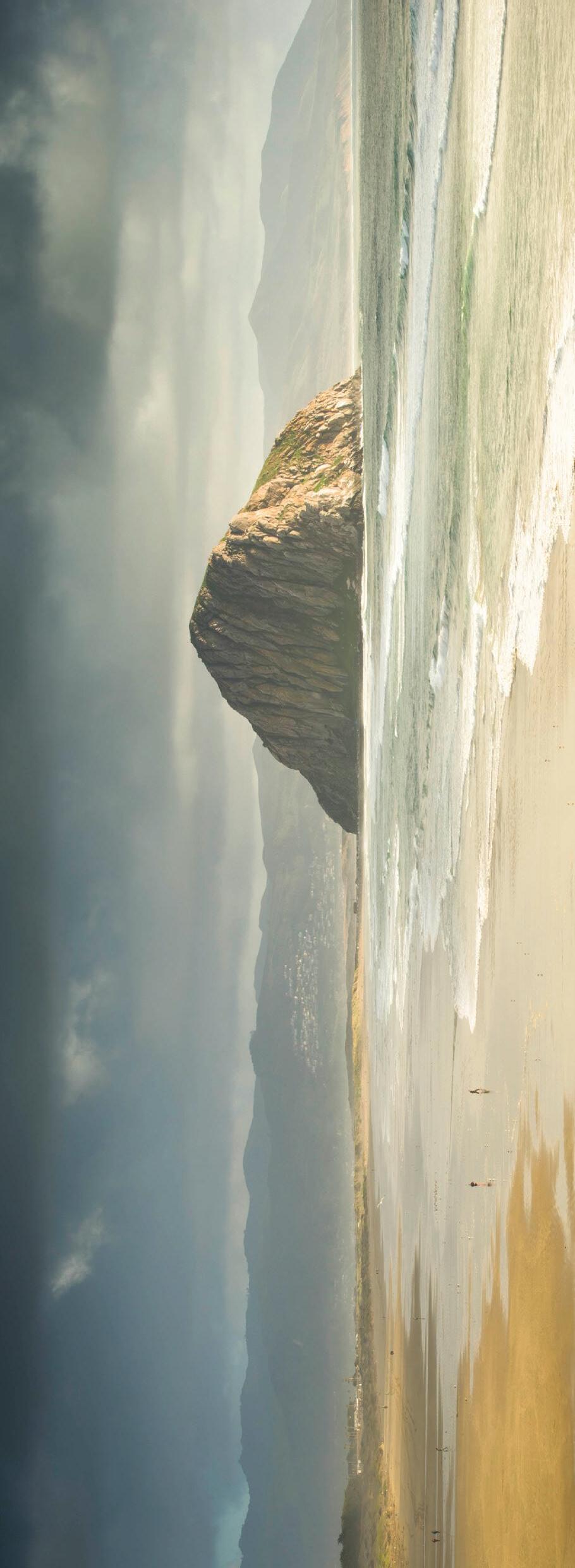
Morro Bay State Park
California State Parks Foundation 33 New Montgomery St., Suite 520 San Francisco, CA 94105 members@calparks.org
California State Parks Foundation is an independent, membersupported nonprofit that mobilizes a diverse network of Californians to be active champions for our state parks. Stay Connected Visit us online at calparks.org and follow us on social media: @calparks @calparks /calparks Front cover photo: Anza-Borrego Desert State Park